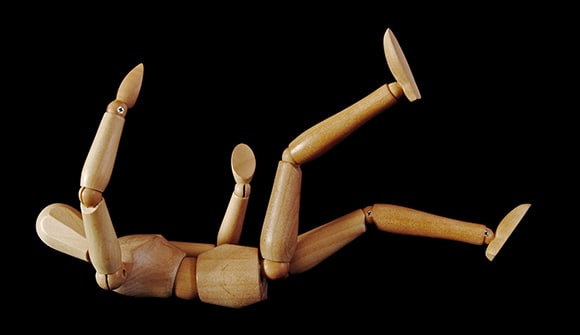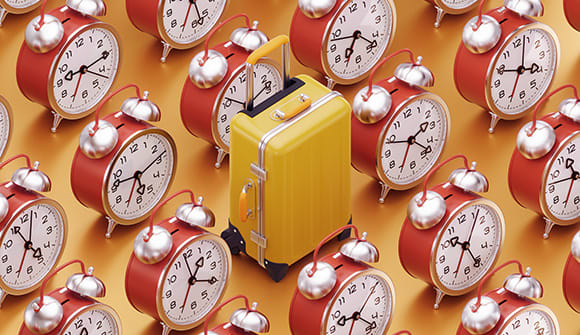Facts about falls
Common causes of tumbles and ways to prevent future stumbles.
Article Date:

Each year in the United States, falls result in 3 million emergency room visits and 800,000 serious injuries requiring hospitalization, according to the Centers for Disease Control and Prevention (CDC).
Unfortunately, a single fall can have lasting effects. If someone falls once, his or her chance of falling again doubles. Just one incident can end a person's independence and trigger a rapid decline in overall health.
Bruce Cathcart, MPT, a geriatric physical therapist with the Baptist AgeWell Center for Health, shares some of the most important facts about falls, along with tips to prevent them.
Broken balance
Falls are caused by a loss of balance. Even though falls affect people of all ages, your risk of a fall steadily increases as you age, and your ability to maintain balance increasingly deteriorates.
Adults over 65 face the greatest risk, with one in four experiencing a fall each year.
“Balance is a complex skill that has to be developed over time,” Cathcart said. “As we get older, we have to practice it regularly to maintain it. Losing this skill can be very worrisome to some individuals.”
Having a fear of falling can make a person more likely to experience one. According to Cathcart, avoiding doing common daily tasks is counterproductive and leads to reduced mobility and sedentary living. This can weaken your bones and muscles, as well as reduce your ability to maintain your balance when you need it most.
Certain medical conditions can also increase your risk of a fall. Some of the most common non-age-related risk factors include:
- Foot pain
- Lower body weakness
- Neurological conditions resulting in difficulty walking or balancing, such as Parkinson's disease and multiple sclerosis
- Obesity
- Use of balance-impairing medicines, such as tranquilizers, sedatives or antidepressants
- Vitamin D deficiency, due to reduced muscle strength
Trip hazards such as broken steps, throw rugs or wet floors can also make a fall more likely.
However, the majority of falls are caused by a combination of factors. The more a person has, the greater his or her chances of falling.
Just one wrong step
According to Cathcart, falls are the leading cause of fatal injuries and the most common cause of non-fatal, trauma-related hospital admissions among older adults. One out of five falls causes serious damage such as broken bones or a traumatic brain injury (TBI), according to the CDC.
Older adults are particularly vulnerable to TBIs due to falls, said Rujvi Kamat, PhD, neuropsychologist with Baptist Behavioral Health.
As we age, Dr. Kamat said our brains shrink and our blood vessels become more fragile, making it more likely that an impact to the head will cause bleeding around the brain. This could cause symptoms such as:
- Confusion
- Headache
- Memory loss
- Nausea
- Problems with balance
- Sensitivity to light
“Symptoms may not be present right away, so it is important to get evaluated at the nearest emergency room after a fall or concussion,” Dr. Kamat said. “If a brain bleed is detected early, it can be monitored closely and drained, if necessary. Early intervention can reduce the risk of thinking problems, lowered independence, and a diminished quality of life.”
Other common fall complications include:
- Bone dislocations
- Bruising
- Cuts
- Internal bleeding
Many falls do not cause serious physical harm, but even relatively minor injuries can have a major effect on mobility and the desire to perform daily activities.
“Fall-related injuries can result in depression, social isolation and feelings of helplessness,” Cathcart said. “What may be a one-off event may have a long-lasting impact on a person’s willingness to continue to living a ‘normal’ life without help from others.”
Fighting falls
Fortunately, most falls can be prevented.
If you have had a fall or are concerned about falling, you can seek a fall risk assessment from a qualified physical therapist. Your primary care provider can provide guidance on next steps to receive an assessment.
The following simple actions can help you eliminate hidden hazards and lower your risk of falling:
- Add railings to stairs
- Improve dim lighting inside your home
- Install grab bars in the bathroom
- Regularly check eyewear prescriptions
- Remove loose items you can easily trip over
Regular exercise can also improve balance and make the body strong enough to handle a fall, should one occur. Activities that may help increase both muscle and bone strength, reducing fall risk include:
- Aerobics
- Dancing
- Hiking
- Racquet sports, such as tennis or pickleball
- Walking
“The best activities are those that challenge your body to maintain balance,” Cathcart said. “However, anything you can do to stay fit and active will go a long way in reducing your risk of experiencing a fall.”
If you’re worried about yourself or a loved one, you can discuss your concerns and potential fall risk factors with your primary care physician for guidance on what to do next. To find the right Baptist Primary Care physician for you, call 904.202.4968. In the event you experience a fall, call 911 or go to the nearest Emergency Center immediately.



